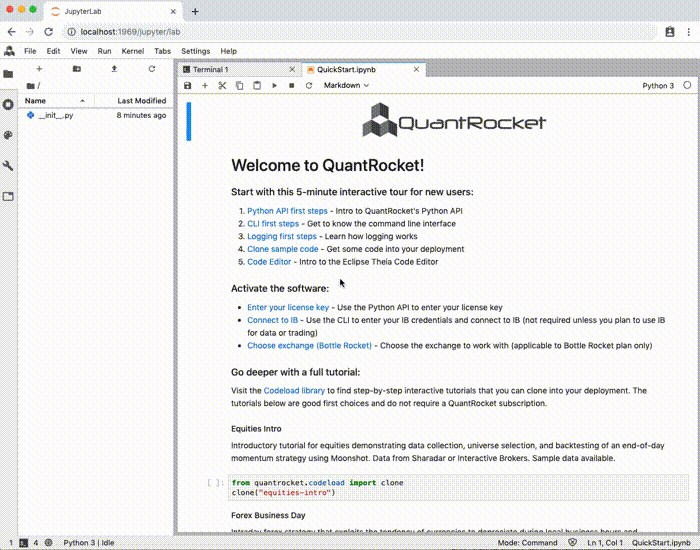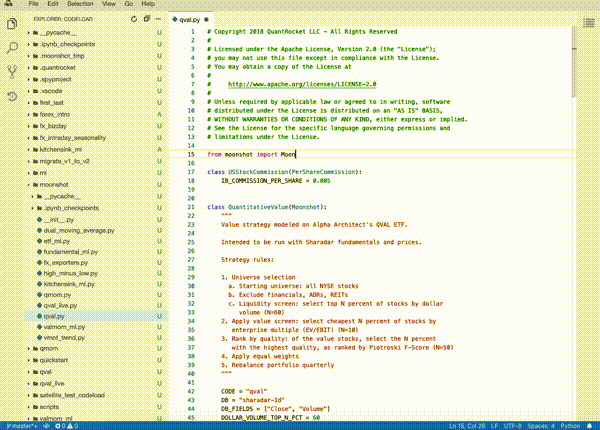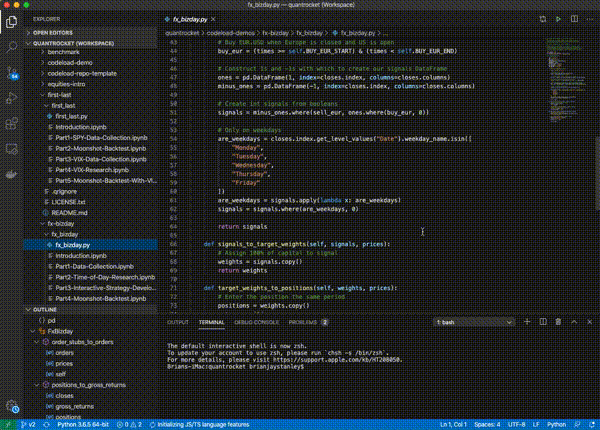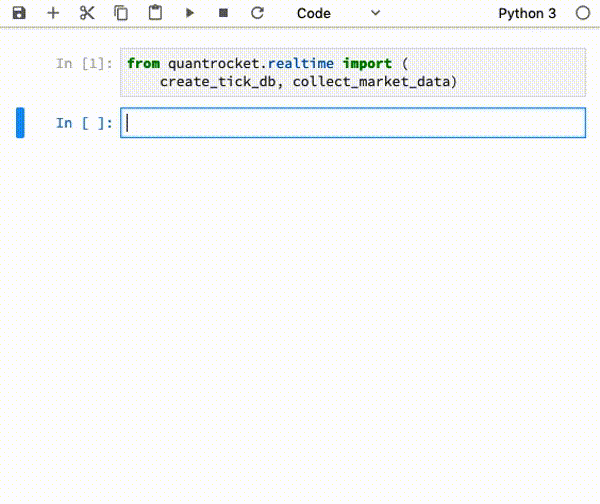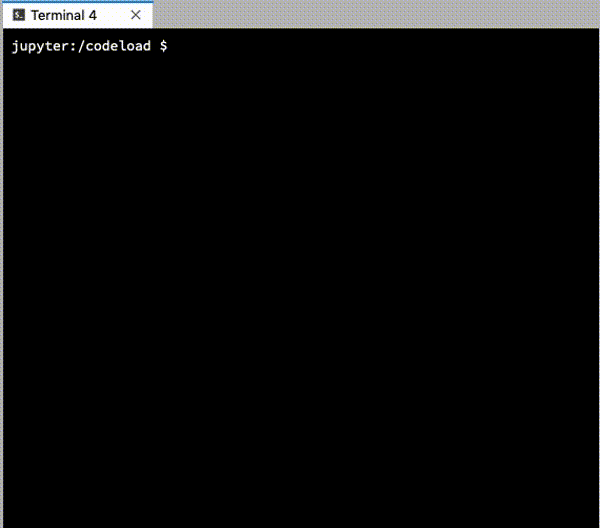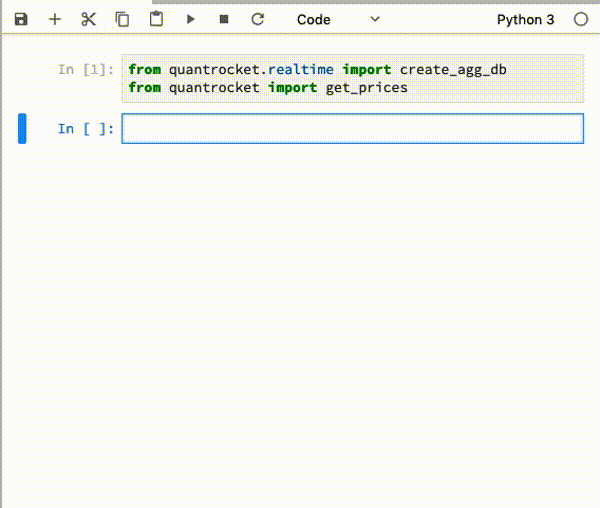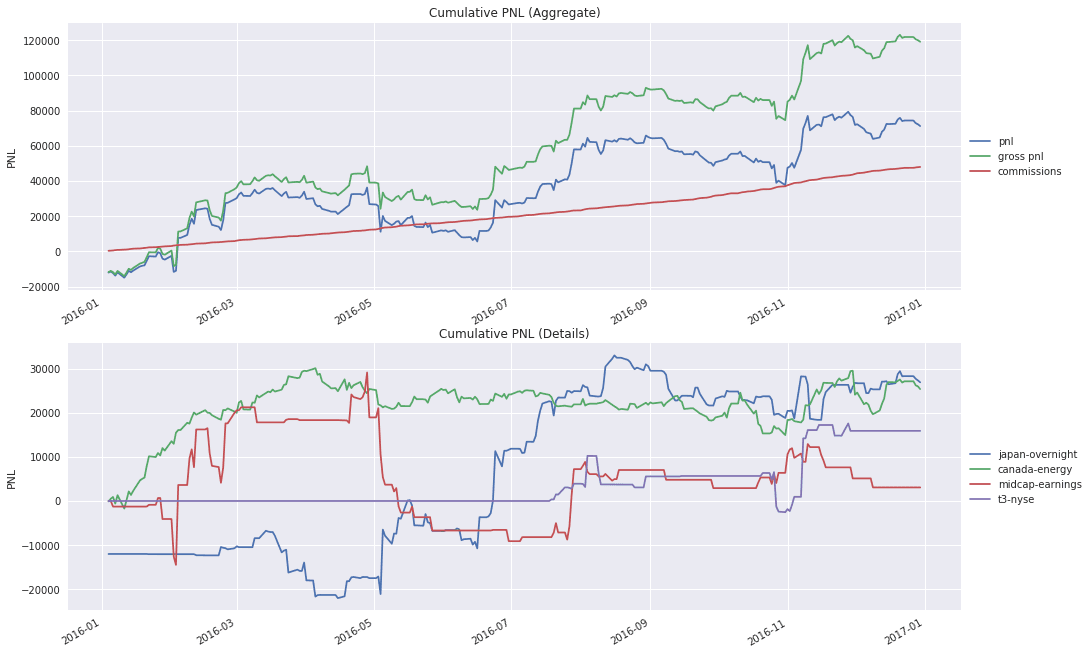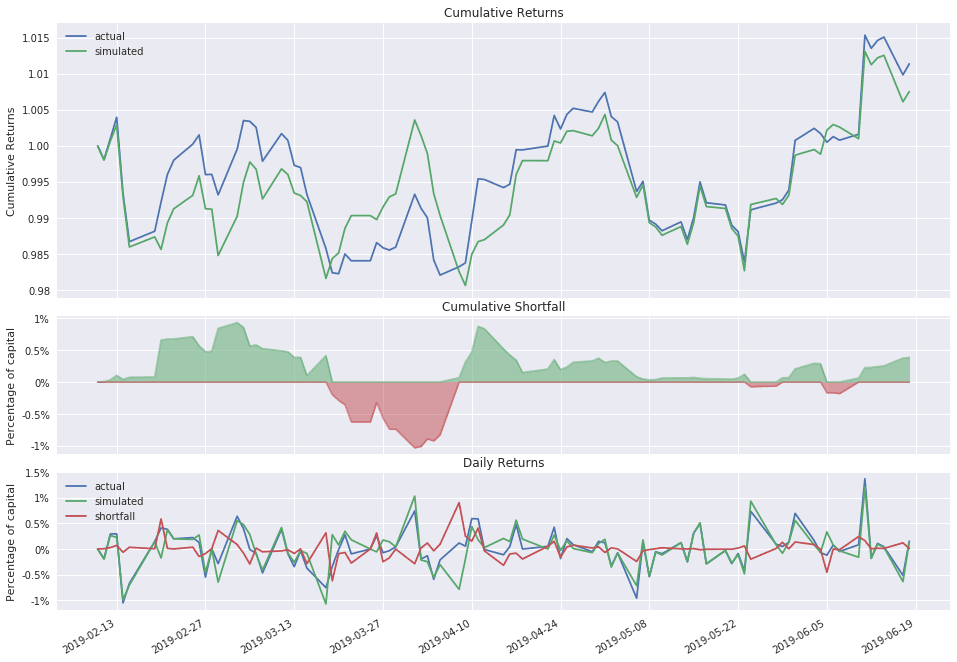 Watch the Intro Video
Watch the Intro Video
Find more example strategies in the Code Library
 Global Data Made Easy
Global Data Made Easy
Research without the wrangling
Most quants spend 80% of their time wrangling data and only 20% doing research.
QuantRocket puts a wealth of global market data at your fingertips so you can focus on analysis.
What will you ask the data?
>>> prices = get_prices('us-stk-1d').loc["Close"]
>>> sectors = get_securities_reindexed_like(prices, fields=["Sector"]).loc["Sector"]
>>> eps = get_sharadar_fundamentals_reindexed_like(prices, fields=["EPS"]).loc["EPS"]
>>> eps.groupby(sectors).mean()>>> prices = get_prices("us-stk-1d").loc["Close"]
>>> borrow_fees = get_ibkr_borrow_fees_reindexed_like(prices)
>>> borrow_fees.where(prices < 1).rank(axis=1)>>> at_close = prices.xs("16:00:00", level="Time")
>>> near_close = prices.xs("15:30:00", level="Time")
>>> is_up_for_session = (near_close - at_close.shift()) / at_close.shift()
>>> last_half_hour_returns = (at_close - near_close) / near_close
>>> last_half_hour_returns.where(is_up_for_session)>>> cl_prices = get_prices("cl-fut-1min", times="14:00:00").loc["Close"]
>>> gold_prices = get_prices("us-stk-1d", sids="FIBBG000CRF6Q8").loc["Close"]
>>> contract_nums = get_contract_nums_reindexed_like(cl_prices, limit=2)
>>> month_1_prices = cl_prices.where(contract_nums==1).mean(axis=1)
>>> month_2_prices = cl_prices.where(contract_nums==2).mean(axis=1)
>>> cl_in_contango = month_2_prices > month_1_prices
>>> gold_prices.where(cl_in_contango)Find your data in the Data Library
Why trade international markets?
See reasons
Most traders focus on the US market — the most competitive market in the world. Yet the US stock market represents less than 50% of global market cap and only 25% of global listings.
Escape crowded trades
Academic research shows that market anomalies are more enduring in international markets .Find the right market
Write your strategy code once and backtest it in numerous countries to find where it works best.Validate your backtests
A backtest that performs well across several global markets is more robust than one tested on a single market.Trade around the clock
When the US closes, Asia opens. When Asia closes, Europe opens. Exploit profitable opportunities whenever they occur.QuantRocket is tailor-made for global markets
 Choose Your Backtester
Choose Your Backtester
One size does NOT fit all
The backtester that's right for you depends on the style of your trading strategies. End of day or intraday? 6 symbols, or 6000? QuantRocket supports multiple open-source Python backtesters. Or, plug in your own favorite backtester thanks to QuantRocket's modular, microservice architecture.
Moonshot is the backtester for data scientists
Key features:
- Based on Pandas, the centerpiece of the Python data science stack
- Fast, vectorized, multi-strategy backtests and parameter scans
- Daily or intraday strategies
- Equities, futures, and FX
- Live trading
- Open source, designed by and for QuantRocket
from moonshot import Moonshot
class MovingAverageStrategy(Moonshot):
CODE = "demo-50ma"
DB = "demo-stk-1d"
def prices_to_signals(self, prices):
# Buy when the close is above the 50-period moving average.
closes = prices.loc["Close"]
mavgs = closes.rolling(50).mean()
signals = closes > mavgs.shift()
return signals.astype(int)See Moonshot code examples or read the Moonshot docs
The first professional-grade platform for live trading with Zipline
Key features:
- Event-driven backtesting using Python
- 1-minute US stock data included
- Support for equities and futures
- Integrated support for related open-source libraries including Alphalens, Pyfolio, and QGrid
- Live trading with QuantRocket-built adapters. Learn more
import zipline.api as algo
def handle_data(context, data):
short_mavg = data.history(context.sym, 'price', 100, '1d').mean()
long_mavg = data.history(context.sym, 'price', 300, '1d').mean()
if short_mavg > long_mavg:
algo.order_target_percent(context.sym, 0.2)
elif short_mavg < long_mavg:
algo.order_target_percent(context.sym, 0)Read the Zipline docs or see Zipline code examples
First class support for machine learning strategies with MoonshotML
Key features:
- Walk-forward optimization: Rolling and expanding walk-forward optimization, widely considered the best technique for validating machine learning models in finance.
- Incremental/out-of-core learning: Train models and run backtests even when your data is too large to fit in memory.
- Multiple machine learning/deep learning packages: Including scikit-learn, Keras + TensorFlow, and XGBoost.
from moonshot import MoonshotML
class DemoMLStrategy(MoonshotML):
CODE = "demo-ml"
DB = "demo-stk-1d"
def prices_to_features(self, prices):
closes = prices.loc["Close"]
features = {}
# use past returns...
features["returns_1d"]= closes.pct_change()
# ...to predict next day returns
targets = closes.pct_change().shift(-1)
return features, targets
def predictions_to_signals(self, predictions, prices):
# buy when the model predicts a positive return
signals = predictions > 0
return signals.astype(int)See MoonshotML code examples or read the machine learning docs
Connect third-party backtesters or run custom scripts
A hint of what's possible:
- Run third-party backtesters such as backtrader
- Schedule daily downloads of third party data
- Create an options trading script that uses QuantRocket's Python API to query data and place orders using the blotter
- Create and schedule multi-step maintenance tasks such as creating futures calendar spreads based on changing rollover rules
import backtrader as bt
class DualMovingAverageStrategy(bt.SignalStrategy):
params = (
('smavg_window', 100),
('lmavg_window', 300),
)
def __init__(self):
# Compute long and short moving averages
smavg = bt.ind.SMA(period=self.p.smavg_window)
lmavg = bt.ind.SMA(period=self.p.lmavg_window)
# Go long when short moving average is above long moving average
self.signal_add(bt.SIGNAL_LONG, bt.ind.CrossOver(smavg, lmavg))See a complete example or read the custom scripts docs
 Deploy With Ease
Deploy With Ease
Run anywhere
Linux, Mac, or Windows. In the cloud or on your laptop. QuantRocket runs anywhere Docker runs.Connect from anywhere
Control your cloud-based deployment securely from any location using QuantRocket's JupyterLab web interface.Flexible architecture
Use QuantRocket as a standalone end-to-end trading platform, or connect to it from other trading applications to query data, submit orders, or use other components you need.Your servers, your way
Hosted platforms like QuantConnect limit your compute resources and require uploading your secrets to third party servers. QuantRocket's ready-to-use trading infrastructure runs on your servers. Give your hardware as much power as you want, and keep your secrets safe.Multiple editors
Your IDE or editor is where you spend your time. That's why QuantRocket gives you choices.
Powered by Open Source

 Live Trading
Live Trading
Multi-strategy, multi-account
Trade multiple strategies in multiple accounts, or even with multiple brokers, with different allocations for each. QuantRocket keeps it all straight.Automated or semi-manual
Fully automate your strategies, or manually review the order file before placing it.Built-in scheduler
Automate data collection and live trading using standard Unix cron.Supported Brokers
 Real-time Data
Real-time Data
Real-time market data, powered by Alpaca or Interactive Brokers.
An intuitive API with a flexible feature set, powered by QuantRocket.
 Track Your Live Trading
Track Your Live Trading
Backtesting is only the first step. Once you go live, you need a clear picture of performance to assess whether live trading is mirroring your backtest.
